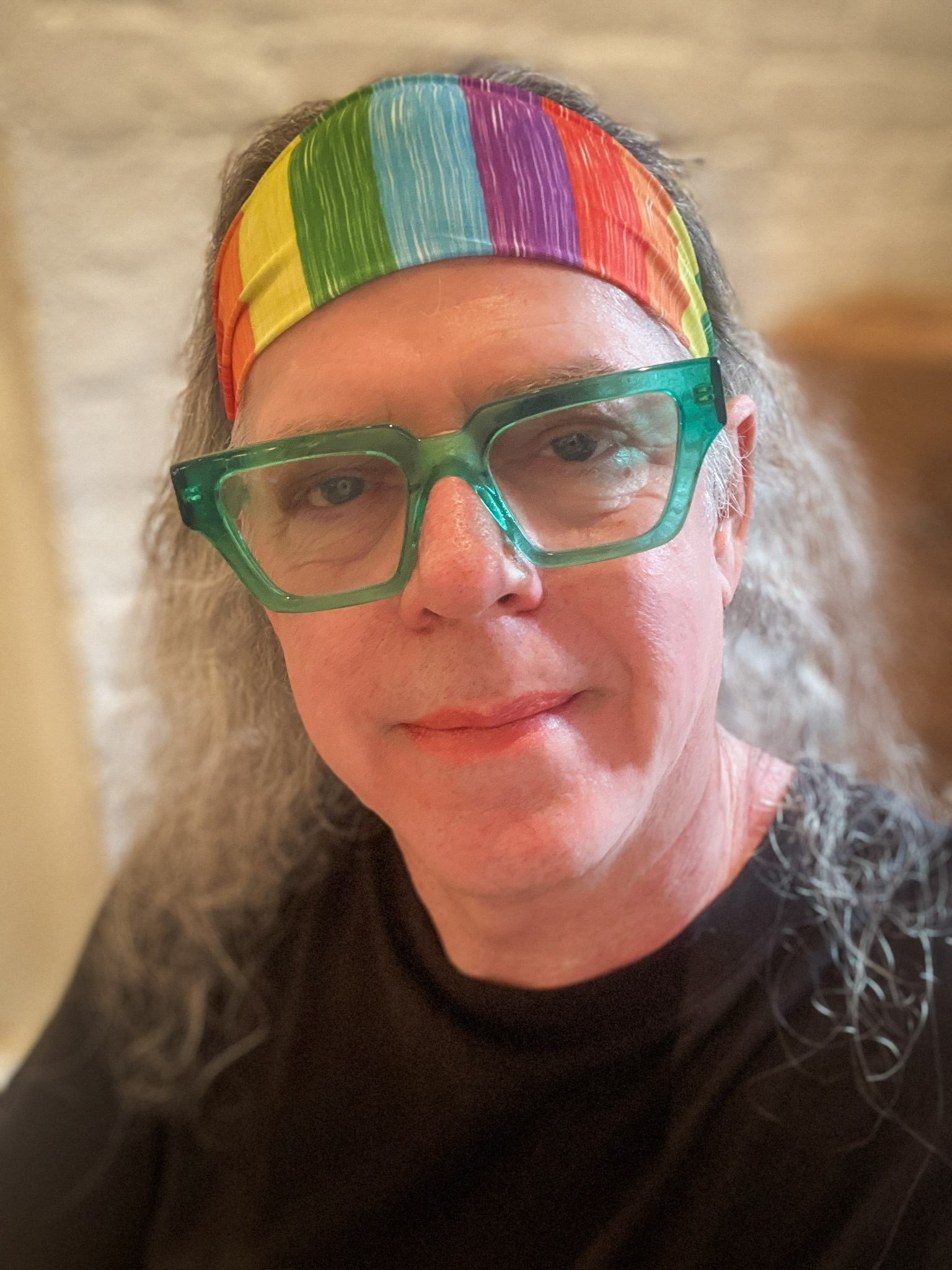I had a brief text conversation with a family member yesterday. My trans-feminine explorations are not sitting well with them. They haven’t exactly disapproved, but it is clear it makes them uncomfortable. I think anything outside the box gender/sexual makes them uncomfortable. They indicated that, as a woman, they aren’t interested in makeup or getting their nails done. They can’t relate to my interest in them as symbols of the feminine. Furthermore, they feel that feminine comes from within. It surprised me that they seemed to lack the very feminine quality of empathy, the ability to see things from another’s perspective. I told them I had strong feminine currents inside me and that the outward expression of feminine through nail polish, lipstick, jewelry, etc. was a way to connect what I feel inside with the outside world and reflect it back to myself.
…
Last week, I attended a literary event featuring Lucy Sante. I bought and have been reading Lucy’s autobiographical account of her transition, which she undertook at age 65. I was 68 when it started to surface that I wanted to present femininely. I am a few months into my 69th year now. She seems to have been more fraught about it than I have been. She also seems to have experienced full-blown gender dysphoria. She is doing hormone therapy. I don’t know anything about the changes that one can expect from hormone therapy, but Lucy looked to me largely like I look to myself. A man presenting femininely.
Hormone therapy, so far, doesn’t appeal to me. My body will have enough challenges coping with getting old. I don’t think adding hormone engineering to the mix would be doing my body any favors, and my psychological health around my feminine emergence is just fine. I am content with feminizing my body with clothing, accessories, makeup, etc. As much as I would like to have woman breasts, and I would, I don’t feel the need to fake them or get surgery. Getting my nails done. Wearing women’s clothing. Wearing lipstick and jewelry. Whatever promotes a feminine impression to the outside world and, most importantly, to myself, is where I am at. Basically, I am a cross dresser. It’s ok if the world sees me as a womanly man and not a woman. Of course, I don’t mind it if anyone wants to acknowledge my womanly presentation with a “mam.”
…
An important realization for my wife in all of this was that, fundamentally, I am still the same person I have always been. Yes, I am presenting femininely. Yes, this exploration has made me a little more feminine on the inside, too. But I have always had feminine inside me and have never presented as anything close to macho masculine.
Lucy Sante talks about coming out to her partner who felt betrayed, lied to. Lucy had been so repressed for so long, that she actually was living a lie and the breakage of trust was a real thing. My wife had a similar reaction initially. I explained to her that I hadn’t been hiding anything from her. That I had shared it with her as soon as I started feeling it. Which was true. In a series of blog posts that turned out to be precursors to the “cracking of my egg,” as the trans community seems to call it, I wrote about what was emerging, though I didn’t realize it when I wrote the posts. I shared all of them with my wife before publishing. I was preparing both of us.
I have, to this day, a collection of beaded purses and hat pins that I developed during my first marriage. My wife carried one of the purses when we got married. She acknowledges there were indications of my feminine nature back then and that was probably part of what she fell in love with. I didn’t present femininely back then. I didn’t present femininely at all until it began to surface last year. So I can truly say to my wife, I didn’t lie or hide anything from you and I started letting you know as soon as I began to know, before I was conscious anything was going on.
Lucy seems to have burst out in a big gush. I am blossoming in a steady flow. Taking careful steps. Testing each new escalation carefully. I am now fully rolled out to family, most friends, and the public. I am pleased about it.
Just now, I read a section in which Lucy talked about dealing with her fascial hair. Laser removal wasn’t available as her beard was gray, and the machine can’t find the gray hairs. She had to do electrolysis, which took a year of weekly sessions in which each individual hair was pulled and the follicle cauterized. That is a kind of dedication and expense that I am not up for.
On my way home from the coffee shop where I was refining and adding to this post, I ran into a friend I haven’t seen in a while. I was in full feminine mode, which they hadn’t seen before. Even a few weeks ago, this encounter would have made me tense. I am much more confident and relaxed now. I opened up the space for him to ask about it by saying it was ok to ask about my feminine presentation. We chatted about various things, and he did circle back to ask me about it. He gave me a hug as we parted.
I have come a long way.




















